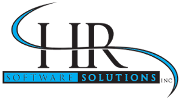Welcome to the exciting process of HRIS implementation! You’re about to take a significant step in enhancing your organization’s human resource management. This move will transform how you handle your workforce. Yes, the thought of adopting a Human Resource Information System (HRIS) may seem daunting. But don’t worry! We are here to simplify this process for you. Our guide will provide clear, straightforward steps to help you transition smoothly into using your new system.
Understanding HRIS Implementation
What is HRIS?
HRIS stands for Human Resource Information System. It’s a software solution designed to handle various HR tasks. Think of HRIS as a reliable and efficient digital assistant. It’s always ready to help, streamlining your human resources activities without ever needing a break.
Why Implement HRIS?
Choosing to implement HRIS can transform your HR department’s operations. This system automates routine tasks, cuts down on errors, ensures compliance with regulations, and offers insights into your workforce. All these changes lead to a more efficient and informed HR operation.
Preparing for Implementation
Assess Your Needs
Begin by identifying what your organization specifically requires from an HRIS. Factors to consider include your organization’s size, industry, and unique HR challenges. This step is crucial for tailoring the HRIS to your specific needs.
Choose the Right System
The market offers a wide variety of HRIS systems. Take your time to explore these options and find one that matches your needs. It’s important to remember that the most expensive or advanced option may not be the best fit for your situation.
Get Everyone on Board
Introducing a new system can sometimes face resistance. It’s vital to make sure your team understands the benefits of HRIS. Communicate clearly about how the new system will improve their work and prepare them for the upcoming changes.
Implementing HRIS in Your Organization
Implementing HRIS is not just about selecting and installing a system. It’s about transforming how your organization manages its most valuable asset – its people. With these insights and preparations, you are now better equipped to embark on your HRIS implementation journey, ensuring a smoother transition for your entire organization. Remember, embracing this change will not only streamline your HR operations but also foster a more engaged and efficient workforce.
The Implementation Process
Planning is Key: Crafting a detailed plan is crucial for HRIS implementation. This plan should outline specific timelines, assign responsibilities, and list the resources you’ll need. Break down the process into manageable steps to ensure clarity and focus for your team.
Data Migration: Transferring existing data to the new HRIS is a vital step. Accuracy and completeness are key here. Double-check your data during this phase to prevent errors and ensure a smooth transition.
Training and Support
Your team will require training to effectively use the new HRIS. Plan comprehensive training sessions and provide ongoing support. This step will address any post-implementation challenges and help your staff feel confident using the new system.
Going Live with HRIS
Test Before You Launch: Conduct a pilot test or a phased roll-out first. This strategy lets you catch and fix any problems before the system goes live across your organization. It’s a safe way to ensure everything works as expected.
Go Live: Once you’re sure the system is ready, it’s time to launch the HRIS company-wide. Keep your team informed and ready for this big step. Clear communication here is vital.
Monitor and Optimize: After the HRIS goes live, closely monitor how it’s performing. Collect feedback from users and make adjustments as needed. This ongoing process helps optimize the system for your organization’s specific needs.
Common Challenges and Solutions
Addressing Technical Issues in HRIS Implementation
Technical Issues:
Expect technical problems during HRIS implementation. Being prepared for these challenges is essential. A dedicated IT support team can be crucial during these times. This team should be ready to tackle any technical difficulties that arise. Their expertise can quickly resolve issues, minimizing disruptions to your operations. Remember, prompt action in fixing technical problems maintains the trust of your team in the new system. For more details visit us at https://hrssolutions.com/.
Encouraging User Adoption and Maintaining Data Integrity
User Adoption:
Adapting to a new system can be tough for some staff members. To facilitate this transition, offer continuous training and support. Keep communication channels open. Regular training sessions, easy-to-access support materials, and an open-door policy for questions can make a big difference. These efforts can significantly reduce the anxiety and resistance often associated with new technology adoption.
Data Integrity:
Accuracy and consistency in your data are vital for HRIS success. Regular data audits are essential to ensure your information remains correct and reliable. These audits help identify and correct errors, ensuring the system runs smoothly. By maintaining high data integrity, you can trust the insights and reports generated by HRIS, leading to better decision-making.
Best Practices for a Successful HRIS Implementation
Stay Focused on Goals
Consistently remind your team of the benefits of HRIS implementation. This focus helps keep everyone aligned and enthusiastic throughout the process. Highlighting the positive impacts, like streamlined processes and enhanced decision-making capabilities, can keep your team motivated and focused on the end goal.
Communicate Effectively
Effective communication is crucial during HRIS implementation. Keep everyone informed about progress, challenges, and changes. Regular updates help build a sense of involvement and trust among your team. This transparency ensures that everyone understands their role in the implementation process and how the new system will benefit their work.
Seek Feedback
Actively seek feedback from your users. Their insights are invaluable in refining and improving the HRIS experience. User feedback helps identify areas for improvement and can lead to enhancements that make the system more efficient and user-friendly. By listening to and acting on feedback, you demonstrate a commitment to making HRIS work for everyone in your organization.
Conclusion
Tackling technical issues, encouraging user adoption, maintaining data integrity, staying focused on goals, communicating effectively, and seeking feedback are critical components of a successful HRIS implementation. By addressing these areas proactively, you can ensure a smoother transition to the new system, leading to enhanced efficiency and productivity in your HR operations. Embrace these best practices, and watch your organization reap the benefits of a well-implemented HRIS system.
Read More:
HRIS Revolution
HRSS can help you transition your company’s HR department into an efficient, reliable, functioning unit
Related Posts

Strategic Workforce Planning with Workday

Innovative Strategies in Workday Solutions
About Us

With HR Software Solutions as your partner throughout the involved HR system implementation process, all of your needs will be met.